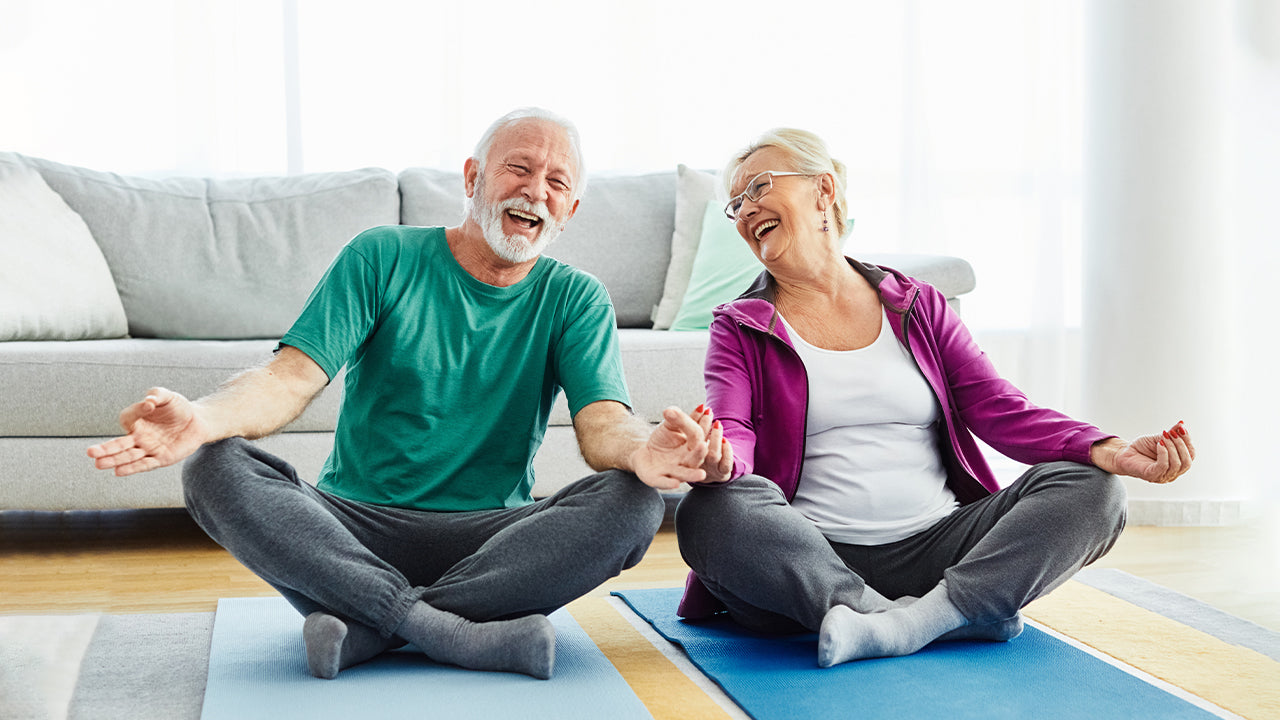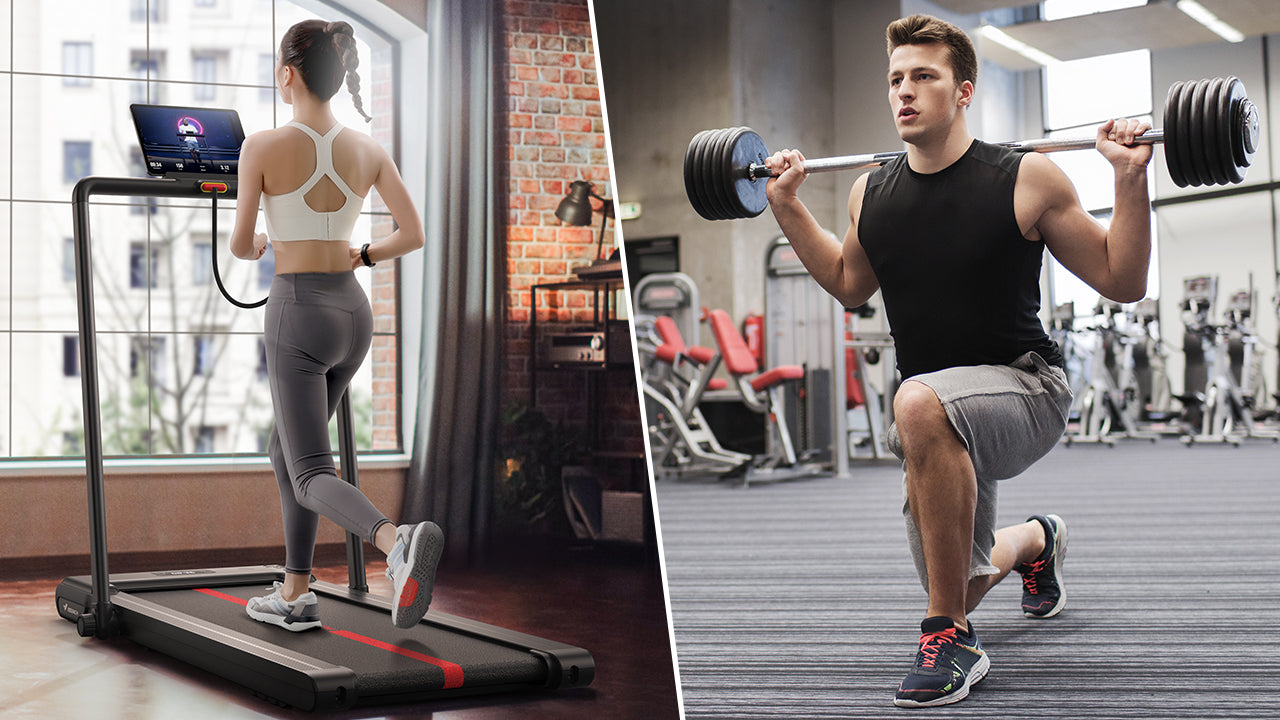While we may not always want to hear it, it will happen to us eventually. As we age, we'll start to experience muscle loss amongst other factors. While getting older generally gives us a stronger and wiser brain it tends to leave us with a weaker body. That doesn't mean that there aren't steps you can take to reduce this tho. Senior fitness is something that should be at the forefront of anyone's mind if they are approaching their elder years.
Of course, those who have always maintained a healthy lifestyle may not see such adverse effects so quickly. What's important for that subset is to understand that there are simply some things that are out of their control. Understanding what's happening at a physiological level can help even the most active people transition into a better approach to ultimately reduce muscle loss in their golden years.
So, Why Are Seniors Prone to Muscle Loss?
Keep in mind that any of us are prone to muscle loss. However, seniors moreso due to the inherent nature and reductions in body functionality are affected a lot more than the average person. There are a few key elements that lead to people losing their muscle mass and overall strength at a much faster rate as they age. Let’s take a look at each potential reason that affects this decrease in muscle loss.
-
Changes in metabolism
We start to notice this in various stages of our life. We may start to notice that the pounds are harder to shed and that we cannot process food and other substances as fast as we could in our early twenties, for example. Our metabolism slows down gradually into our senior years when we burn fewer calories at rest. That means we tend to gain weight and lose muscle mass much faster as we age. It means we need to reduce our caloric intake, and it requires us to exercise longer to achieve similar results that seemed easier to us at a younger age.
-
Changes in physical activity
Another area that is important for not just seniors' fitness but fitness in general is staying active. Life tends to slow down as we age, and many of us fall into this unhealthy pit of seeing our activity levels decrease, which is a core component of maintaining our muscle mass. This could mean simply not going to the gym to work out as often or simply having a less active lifestyle as we get older and older.

Our bodies at an advanced age can only handle so much, so it’s important to make sure we’re always staying active, even if we don’t yet have an overall plan to increase our muscle amount. Maintenance is just as key, and it all starts with staying active. It will help us maintain our range of motion and flexibility, which will help in the long run for muscle gain.
-
Decrease in testosterone
There's a decrease in hormone production in general as we age, specifically of testosterone and other growth hormones vital to muscle growth. That means with less production, combined with less activity and slower metabolism, it just makes it harder to generate and maintain that muscle mass as we age.
Taking these components into account and factoring chronic diseases into the mix makes it a common issue when it comes to muscle retention. As our bodies age and we live our lives, we end up having a larger chance of getting affected by chronic diseases that can hinder our ability to create muscles. This could be a heart disease that limits how much activity we can do to chronic arthritis that restricts movements and makes it painful to stay active for many.
This can lead to a cascading set of issues, as the body doesn't have enough muscle mass to keep you active or to enable everyday activities in your senior years. This could include simple issues such as just climbing a set of stairs in the house or walking down the block to get some groceries at the local convenience store.
With less muscle mass, it can lead to an increase in harming ourselves by accident, being prone to more falls, and thus more fractures due to a lack of coordination and agility that muscles can help to provide. If this happens, it can continue to restrict attempts at improving muscle gains and strength gains as well.
When you're in the twilight of your years the quality of life begins to erode for those with too much muscle loss; where not only the common day-to-day activities are tough, but it can see seniors’ distance themselves from their favorite hobbies or being able to socialize with one another.
Strategies To Prevent Muscle Loss in Seniors
The first strategy to incorporate is to start getting active. That means finding the right type of workout regime that is compatible for you and being consistent with that program to maintain a certain level of activity. It goes without saying that you should ensure you exercise within your limits. Focus on a balance between low impact exercises and regular exercise. Seniors' fitness can include a variety of exercise options but should factor in resistance training and weight lifting where possible to help with muscle buildup and strength training. Combine that with low-impact exercises such as swimming and walking, and the body will not have so much stress placed on the joints.

Diet is also a key component of muscle loss prevention. Yet, with a weaker metabolism, it makes it even more important to pay attention to what we put into our bodies. The key component is to have a protein rich diet. Protein intake is dependent on overall body weight, and it is always recommended to consult with a nutritionist to determine what is the best diet for your body based on the uniqueness of the individual.
Consider the intake of supplements, even creatine supplementation. Creatine helps with muscle strength building for seniors and isn't just something that professional body builders should be using. It's a naturally occurring supplement that when included into a diet only helps to improve the overall effectiveness of muscle building.
Utilizing Exercise and Supplements for Muscle Prevention
Keep in mind that this isn't a one size fits all scenario. Senior fitness doesn't involve just working out, dieting or drinking creatine shakes and that's it. It's all about developing the right type of program tailored to your unique needs.
Consider a resistance training program that combines the use of a recumbent bike for seniors which is an excellent way to offer a safe and consistent way of getting us to exercise. The recumbent bike ensures proper posture and positioning and can help to foster aerobic exercise while the resistance of the bike can be altered to increase muscle mass creation. It will help to work all the major muscle groups, especially on the bottom half, which will help with balance and coordination and activate your core as well.
A recumbent bike for seniors who want to get into shape will also help to control the rate at they want to get in shape. This essentially means that it's great for all activity levels, even for those that are just starting out.
It's also an excellent investment in building out or expanding a home gym, allowing for a multi-purpose and scalable workout machine that’s ready to turn on the resistance as your workout journey grows.
-
Creatine Pros and Cons
We briefly mentioned the usage of creatine, but let's also take a look at the creatine pros and cons for Seniors so that it's clear how to best include it in your overall program and diet.
-
Pros of Creatine for Seniors
Primarily, it will help to improve muscle strength and power with the proper dosage and constant usage. It also potentially helps prevent or reduce the onset of sarcopenia, which is a technical term for muscle and strength loss that occurs in seniors.
Added to these, it helps to give seniors that extra boost of energy during their workouts to take them just a bit further, improving their exercise output. Creatine, even in supplemental form, is generally safe. Keep in mind that this is best discussed after a complete evaluation with a medical professional.
There are multiple options out there for creatine supplements, and some are also designed for seniors who are looking to regain control of their muscle growth. They may have additional supplements, vitamins, or minerals that are catered to seniors, helping to focus on not just muscle growth and improvement but overall health and well-being in general.
-
Cons of Creatine for Seniors
The initial usage of creatine results in side effects for some. Your stomach may be sensitive to digesting this, and that could lead to stomach pains and cramps early on. There's also the possibility of bloating happening early on, as well as weight gain that may not yet be in muscle format. This is something to watch out for at the beginning of using creatine.
Another con of creatine is that it can exacerbate issues you may be having with your kidneys or cause complications with medications that also affect your kidneys. Hence, the importance of speaking with your doctor about whether creatine is a suitable option for your overall health plan.
A final con of creatine is that it isn't a complete solution for preventing muscle and strength loss. It isn't a magic pill or supplement that's going to erase all the problems that come with getting older and how physically fit one can be. It cannot be seen as a crutch or a replacement for not exercising or having a healthy routine, as you won't get any significant benefits from just taking it and nothing else.
There's also a cost to factor in, as creatine supplements in any format are not as low cost as it seems. That means there's a bit of an investment to consider when using creatine and shifting your diet to work towards muscle growth and maintenance. That may be difficult for seniors who live on fixed incomes and assets but it's still a critically important decision to make. Doing it will result in a much healthier state which can reduce any unforeseen costs or expenses down the line.
In the end
Make sure that you have a total plan by the end of the day. That means the right combination of resistance training, proper protein intake, and creatine supplements if your doctor ends up saying it’s fine to include it in your plan.
One other thing to take into consideration is to have realistic goals and expectations. While any large goals can be is possible you should also understand there may be limitations to what you're able to achieve physically at a more senior age. As long as you focus on a daily routine, you are bound to see positive results through a gradual increase. You’ll want to also increase your routine and workouts as you get stronger to continue improving your muscle gains.
Not only that but it's always optimum to do activities with others. Not only will socializing help with your overall mental wellbeing but it will also help you stay motivated. A workout partner is there to keep you accountable and helps to share your progress as well as your victories.
Make sure that your workouts are also fun and enjoyable. You don't need to have a monotonous routine; just be consistent when it comes to working out and stick to that schedule. That doesn't mean the same exercises or equipment being used every single time too as that can get dull pretty quickly.
Finally – don't give up. Muscle buildup for seniors can feel like an uphill battle so the key is to keep going forward. It takes significant effort and time, and if you pause during the process, you may see yourself quickly losing the gains you've worked so hard for.































Leave a comment
All comments are moderated before being published.
This site is protected by hCaptcha and the hCaptcha Privacy Policy and Terms of Service apply.